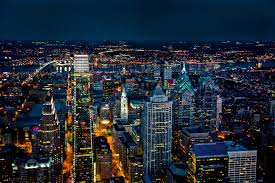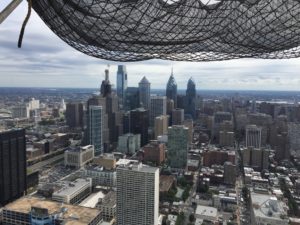Is one of the keys to Philadelphia’s tax reform an increase in commercial property taxes? My take … yes.
That answer may be closer to “yes” than it has been in a long time. Hello, Philadelphia Jobs Growth Coalition.
The Problem:
The City of Philadelphia has unfair and archaic tax policies on both people who live in and/or work in the city, and businesses who are located in the city.
The Solution:
Find a reasonable fix without short-funding the city’s budget, and without increasing taxes on both city-based residential homeowners and city-based workers (as that has already been done too many times over the past half century, and hasn’t worked).
This is where the Philadelphia Jobs Growth Coalition comes in. As stated on their website:
“We formed with one goal in mind: fostering the growth of 50,000 to 100,000 jobs in Philadelphia over the next 10 years. We know how to make that happen; by reducing business and wage taxes, we can create an environment that encourages small and minority businesses to start and grow, existing business to expand or to relocate here, and workers of all kinds to find opportunity in Philadelphia. We can do this without opening any gap in the City’s budget, by increasing the property tax rate exclusively on commercial real estate and use that to provide immediate and substantial tax reduction for all workers and for all businesses, small and large.”
Sounds great, right?
I thought so, but there are always pros/cons to every public idea, theory, and solution. I mean seriously, did we not just go through one of the most insane presidential elections in history, where every voter had drastic differences in opinion? We did, and we’re getting through it.
What I personally find fascinating about PJGC’s approach, is that some of the city’s most prominent business leaders (i.e. Jerry Sweeney, Brandywine Realty Trust) are the ones actually proposing/supporting this idea. That means they personally stand to receive property tax increases on their city-based commercial properties, if this change in legislation goes through PA’s lawmakers. Just because it seems ironic, does not mean it doesn’t make sense for Philadelphia as a whole.
So, why would commercial property owners even bring this up as a solution?
Because they know that the commercial property tax increase they are proposing is a drop-in-the-bucket compared to what the positive wage/business tax changes would do for the City of Philadelphia, such as: bring more jobs to Philadelphia proper by competing with our suburban neighbors, decrease the wage tax for both city-based residents who work in the city and suburban-based residents who work in the city, and be more competitive on a national scale to other US cities that currently offer more business-friendly tax policies than Philadelphia. Oh, and the commercial property tax increase would still make Philadelphia competitive with our Northeastern neighbors (i.e. NYC, Boston, DC, etc); so there’s that too.
Sounds like a no-brainer, right?
Well, it will most likely be an uphill battle, as we have all seen over the past few years with Governor Wolf. Just because Mayor Jim Kenney and “Un-Official” Mayor Paul Levy (that’s where the name “Levy-Sweeney Plan” came from) are enthusiastically behind this legislation, it does not mean that Philadelphia’s (and also, Pennsylvania’s) constituents are behind it as well. In order for this to move forward, and for Philadelphia to put an end to PA’s uniformity clause, it will take an amendment to the state constitution, two consecutive (and successful) sessions by PA lawmakers, and a voter referendum.
So needless to say, we still have a ways to go.
The good news is that people are finally starting to talk about this issue, both public and private, and a plan is on the table. It will be interesting to see how things play out in 2017, after passing the PA sniff test in June 2016.


